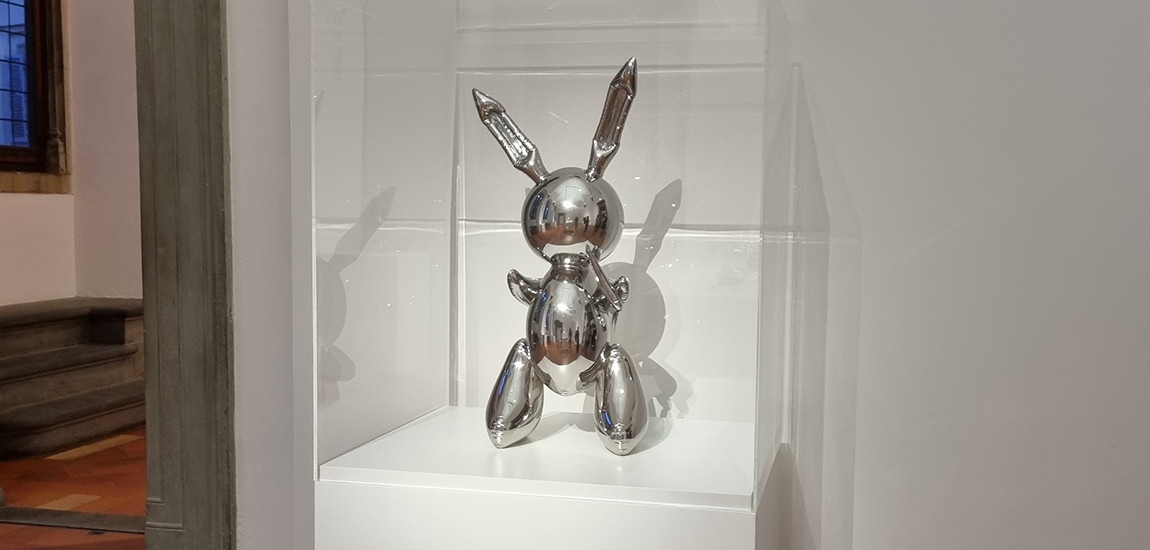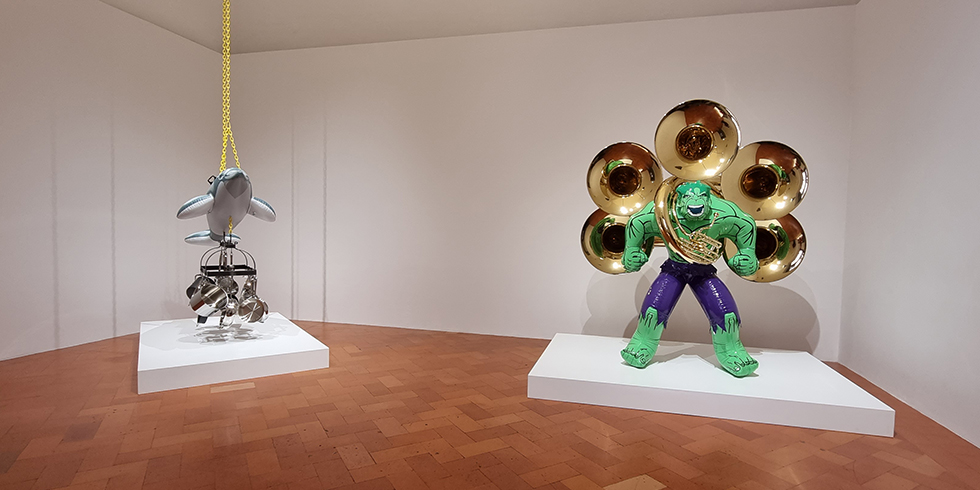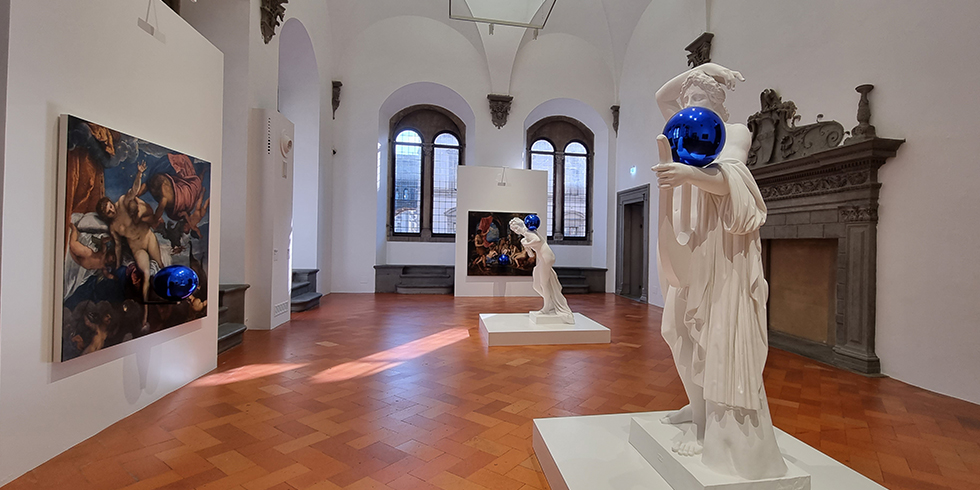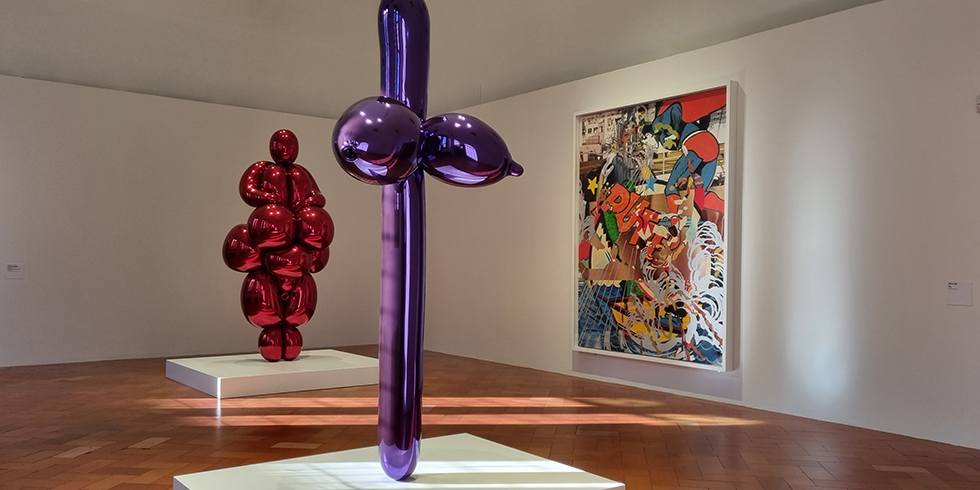
Jeff Koons.Shine in Florence
The series of exhibitions dedicated to contemporary art at Palazzo Strozzi continues,
this time it is the turn of the very famous Jeff Koons, who had already been in Florence in 2015 with the much
discussed golden sculpture Pluto and
Proserpina, displayed in front of Palazzo Vecchio.
Jeff Koons. Shine brings to
Palazzo Strozzi more than 30 shiny and colorful artworks that investigate the
Koonsian concept of shine. Koons was
fascinated by reflective surfaces from the very first experiments, which
included real mirrors and already contained in unripe form the typical elements
of his art: mirrored surfaces, inflatables, toys and references to ancient art.
The works on display that most will fascinate visitors are certainly those of
the Celebrations and of the more
recent Popeye series, such as Sacred Heart (1994-2007), Baloon Dog (1994-2000), Dolphin (2002) or Hulk (2004-2018) ). Colorful and fun pieces, characterized by a
strong ambiguity between reality and appearance.
Sacred Heart is a huge wrapped heart, balanced on its pointed end, only it's not wrapping paper we see, but mirror polished stainless steel. A very heavy sculpture that conveys an incredible sense of lightness, of joy, of festivity.
Likewise, Baloon Dog is a large-scale reproduction of a dog made out of balloons, one of those assembled by clowns at children's parties.
Even more amazing are perhaps Dolphin
and Hulk.
Both are assemblages of objects: on the one hand, ready-made objects, such as
bass tubas and steel pots, on the other, created objects such as the faithful
steel and bronze reproductions of inflatables.
What is surprising is the perfection of these reproductions, which appear so
light and so detailed that you’d never doubt their veracity. When looking at
these art pieces, the temptation to touch them is almost irresistible, the eye
tells us that they are soft to the touch and filled with air, but this belief
is immediately denied by the explanatory tags, on which we find out they are
made of polychrome aluminum and bronze.

Dolphin and Hulk (Tubas).
Another work that has a similar effect is the
very famous Rabbit (1986), purchased at an auction in 2019 at the record
price of 91 million dollars. It is Koons' first work reproducing plastic
inflatables with polished steel and as for the following works, the sensation
when seeing it is precisely that of wanting to touch it to ascertain what
material this “inflatable” silver rabbit is really made of.
In order to perfectly reproduce the folds of the plastic, Koons' works are scrutinized meticulously by the artist, only a few have his approval.
An example of this perfectionism is the Gazing Balls series, consisting of perfect reproductions of famous works of sculpture and painting containing shiny blue blown glass spheres. Koons examines the spheres one by one and approves only one out of three hundred.
Although they often reproduce everyday objects
that the artist buys for a few dollars in junk shops, the actual quality of the
resulting artworks is incredibly high.

Works of the series Gazing Balls.
The exhibition concludes with works from the Antiquity
series which once again reaffirm Jeff Koons' interest in ancient art. These are
two large sculptures in colored and mirror-polished steel (cover photo) that
are inspired by small paleolithic fertility statuettes, once again transformed
into balloon sculptures. Themes such as the fragility of life, sexuality,
childhood and breath run through Koons' entire artistic production, and these
works in particular contain all the above elements.

Balon venus lespugue (Red) and Baloon Venus Dolni Vestonice (Violet).
The American artist is convinced that art is
not complete without the viewer. Each work is lucid and reflects the
surrounding environment, including the viewer, incorporating it, distorting it
and returning it to the source. The work comes to life when it is observed
closely, and changes continuously according to the observer and the surrounding
environment.
Once out of the museum, the visitors take away with them the possibility of
this interaction with the artwork and therefore the artwork itself. Without
one, the other does not exist. After
all, this is precisely the main purpose of Jeff Koons' work, to make art as
inclusive and democratic as possible.



